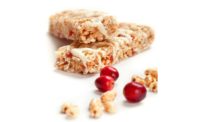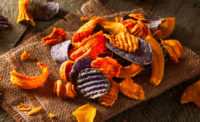Retail products across the sweet goods category, which includes a wide range of morning and anytime treats like doughnuts, muffins, pastries, coffee cakes, and more, continue to find their way into shoppers’ baskets. Retail sales of perimeter pastry products have seen particularly strong growth over the past year, as noted in our 2022 State of the Industry coverage of sweet goods (see “State of the Industry 2022: On-the-go sweet goods”).
One essential ingredient to this category is fat—and how it’s incorporated into the product. In order to learn more about ingredient and process strategies for this instrumental aspect of sweet goods, we reached out to Dan Moats, CMB, national account manager, Stratas Foods LLC, Memphis.
Douglas J. Peckenpaugh: What are the top variables that factor into developing superior pastry products?
Dan Moats: Danish pastry products (e.g.. pecan rolls, coffee cakes, and cinnamon rolls) are the primary pastry types that readily come to mind.
The highest-quality ingredients utilized in the right proportions and the right order of addition are the top variables that factor into developing superior pastry products. The critical component in the makeup of Danish pastry dough is the type of pastry shortening utilized and the process approach.
Danish pastry is a rich, yeast-leavened, sweet dough. The distinguishing feature of Danish pastry preparation is the layering of dough sheets with fat. Danish pastry dough contains enough yeast to give a porous structure to the crumb. When made up properly, the product will be flaky and short. The shortening itself is liquefied by the heat during the final stages of baking and absorbed into the dough.
Since it is important to maintain separation of dough layers until the product goes to the oven, Danish pastry is rolled while it is cold. The usual procedure is to spread the roll-in over two-thirds of the dough, then given a threefold, repeating this process about three times. Danish doughs do not ordinarily have much fermentation. An initial short period of 20–30 minutes in the retarder before the fat is rolled in allows some gas and flavor to be developed. The dough is usually retarded between each series of sheetings, and in each of these cases some fermentation will occur. Proof time is short, usually 20–30 minutes.
The richness of Danish pastry is often varied over a wide range. The most popular “American” type has approximately one-half as much roll-in as flour. Some bakers roll as much as 20% roll-in into sweet dough to produce Danish pastry. In such instances, the finished product represents a poor imitation of really high-quality product. When the quality of roll-in is low, the dough requires more folds to prevent leaking and oily crusts. Danish doughs having 50% roll-in should be given three folds; doughs containing 70-80% roll-in should be given four folds.
Careful consultation with your shortening, margarine and oils supplier should lead you to the right product for your application. Generally speaking, the roll-in for Danish pastry should be of medium firm consistency, slightly firmer than the average plastic shortening. It should remain plastic and free from lumps. Hard, brittle fats are unsuitable for Danish pastry production.
DJP: What are some of the fat and oil challenges impacting bakers developing treats like pastries?
DM: Common challenges are not achieving the desired organoleptic properties as it relates to developed dough structures to translate to tender crumb properties.
This may be addressed by the following considerations when selecting a Danish shortening:
- Melting point of the shortening. The melting point of the shortening will have an impact on the eating quality of the pastry. Melting points around body temperature will have better eating quality compared to higher melting points.
- Plastic range. Roll-in shortening or margarine for laminated doughs must have a broad plastic range. Fat consistency should match dough consistency at retarder temperatures and at room temperature or above. If the fat is significantly harder than the dough at the cool temperature, then when a retarded dough is rolled out, the fat is likely to tear holes in the dough. If the fat is softer than the dough at room temperature, then as the dough warms during laminating, the shortening soaks into the dough, gluing the dough layers together and losing the layering effect.
- Flavor. It may be desired for the shortening to have a bland flavor so it will not mask the flavor of other ingredients, or to use a shortening with a butter flavor.





